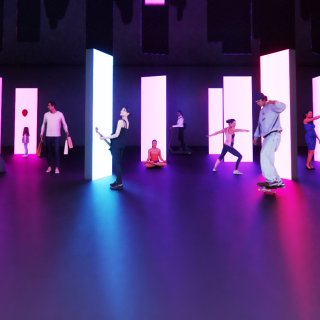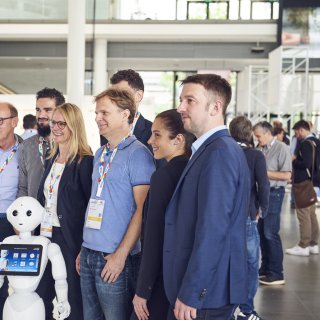
virtual product training in the automotive industry
By Peter Milotzki
Imagine you could see a brand new vehicle with all its facets, from the rear axle to the windscreen wiper – including all product details before it is launched on the market and without a lifting platform and complex dislocations. A utopian notion? Not with the virtual training of rpc.
HTC VIVE provides the perspective
Everything in China is on a slightly bigger scale. When it comes to premium sedans, for example, Chinese customers often prefer models with a long wheelbase. This is also likely to be the case with the new BMW 5 Series, which the Munich-based car manufacturer is unveiling in China in June 2017. To allow BMW dealers in China to experience the unique features of the new model in closer detail we were running its first-ever virtual training program allowing participants to see the new rear axle up close without the vehicle having to be raised upon a lifting platform. In a specially developed virtual training space, the rpc trainers will take BMW sales staff around a virtual 5 Series model and explain the various product details and functions of the different components. Participants were able to take a close look at the new axle suspension or the inner workings of the shock absorbers with the help of a pair of HTC VIVE virtual reality glasses.
conveying complex technology
The BMW dealers are able to see components that would otherwise remain hidden under the chassis. The training provides a detailed picture of every component and how it works – from a virtual 360-degree view right down to each individual screw. To see the running gear and powertrain, participants can use the HTC VIVE glasses to remove the chassis and body shell from the BMW 5 Series model. This allows them to form a good understanding of how the rear axle is structured and how the components work together when the vehicle is in operation. The participants also have the option of virtually taking the engine out of the vehicle to examine it.
preparing sales staff through virtual training
rpc developed the content and learning strategy for this training program itself. From our perspective, it is important that we use new methods to prepare sales staff in the best possible way of selling these vehicles. The customer-centric training content is conveyed more effectively by virtual means than by using PowerPoint slides. In place of a handout, our finishing touch for the training program is an app allowing participants to refer back to the training program and its content at all times. This training provides a perfect customer experience for the dealers and their end customers.








